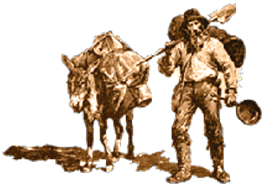


xxxxxIt was in
January 1848, in the foothills of the
Sierra Nevada in central
California, that gold was discovered in large quantities, and the world’s first gold
rush got under way. A German-
was having a sawmill built at Coloma, and it was then that John Marshall, a
carpenter working on the site, found a quantity of gold nuggets in the nearby
American River. The two men agreed to become partners and share the
find, but word soon got out, and within a matter of months thousands
of would-
shacks in the hope of making their
fortunes. By the following year, some 80,000 aptly named “forty-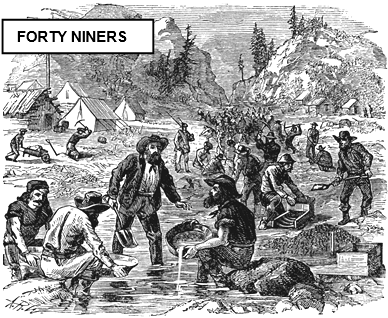 Basin,
or made the treacherous journey northwards through Mexico. In
addition to American immigrants, many were from Australia and the
countries of Europe and South America.
Basin,
or made the treacherous journey northwards through Mexico. In
addition to American immigrants, many were from Australia and the
countries of Europe and South America.
xxxxxSome of the
first arrivals did make sizeable fortunes, but given the vast
number of individual miners working the sites, and the inevitable
introduction of machinery -
xxxxxIncidentally, John Sutter made nothing out of the gold found on his land. The fortune hunters quickly overran his estate, destroying his property and stealing his livestock, and he and his wife were obliged to move east. There he was declared bankrupt, and spent the rest of his life vainly trying to get compensation via Congress. However, before leaving California he did manage to hand over his land to his sons, and in 1848 they laid out the beginnings of the present city of Sacramento, naming it after the river of that name. ……
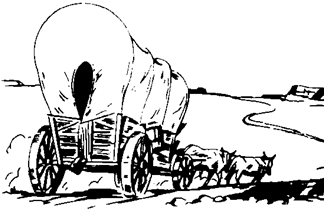 xxxxx…… The enormous influx of
people into California in the late 1840s -
xxxxx…… The enormous influx of
people into California in the late 1840s -
xxxxx…… Gold was also found in other areas of the United States during this period. In 1859, for example, Central City in Colorado became known as “the richest square mile on earth” and a year later Idaho City developed into one of the earliest boomtowns. However, as we shall see, the next big find, centred around Anvil Creek in western Alaska, did not occur until the end of the century.
xxxxxIt was in
January 1848
that gold was discovered at Sutter’s Mill at Coloma in central
California. Within months thousands of hunters had arrived in the
area, and by the following year some 80,000 aptly named “forty-
Acknowledgements
Forty-
Including:
Gold Rushes in
Australia, South
Africa, Canada
and New Zealand

Va-
xxxxxIn 1851 gold
was discovered around the towns of Ballarat and Bendigo in
southern Australia
and thousands of would-
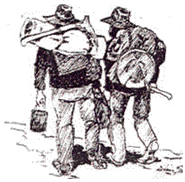 xxxxxThe discovery of gold in California in 1848 triggered
off gold rushes in other parts of the world. The next to take
place was in southern Australia. In 1851 gold was found at Warrandyte, some sixteen
miles from Melbourne, and soon afterwards even richer deposits
were discovered centred around the towns of Ballarat and Bendigo.
Vast numbers of diggers from all over the colony were soon
arriving in the region, and these were joined by some 200,000
immigrants from the mother country Britain, and about 25,000 from
China. As a result, the population of the once small coastal town
of Melbourne had more than trebled within two years, and by 186
xxxxxThe discovery of gold in California in 1848 triggered
off gold rushes in other parts of the world. The next to take
place was in southern Australia. In 1851 gold was found at Warrandyte, some sixteen
miles from Melbourne, and soon afterwards even richer deposits
were discovered centred around the towns of Ballarat and Bendigo.
Vast numbers of diggers from all over the colony were soon
arriving in the region, and these were joined by some 200,000
immigrants from the mother country Britain, and about 25,000 from
China. As a result, the population of the once small coastal town
of Melbourne had more than trebled within two years, and by 186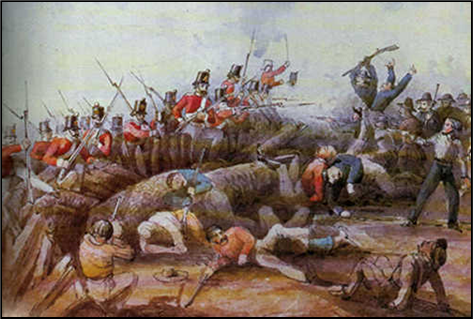 0
well over 500,000 people were living in the state of Victoria,
nearly half the country’s total population.
0
well over 500,000 people were living in the state of Victoria,
nearly half the country’s total population.
xxxxxAs noted earlier, it was during this gold rush that some 150 “diggers” (goldminers) took up arms in protest against restrictions imposed on their right to search, and their lack of both the vote and political representation. When state troops arrived in November 1854, the diggers constructed a wooden stockade in the Eureka goldfield, but it was quickly overrun and about 30 of them were killed. However, the thirteen leaders who were charged with treason were acquitted, and the incident, known as the Eureka Stockade, came to be seen as the first landmark on the road towards Australian democracy.
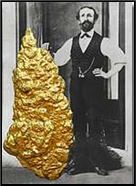
xxxxxIncidentally, the gold found in Australia, in the south and later
elsewhere, was usually in the form of nuggets. Some of these were
extremely large and valuable. The biggest one was found at Hill
End in 1872 by a German migrant named Bernard Holtermann (here
seen with his find). The so-
xxxxxIn 1853 gold
was also discovered in South Africa, when a prospector named Pieter Marais discovered
alluvial gold in the Jukskei River, just north of what was to be
Johannesburg. As we shall see, this city started off as a boomtown
in 1886 (Vc) following
a substantial find of gold in the Rand 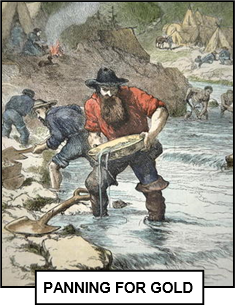 district
of the Transvaal.
district
of the Transvaal.
xxxxxLikewise in Canada, a gold strike in
1858 in the lower Fraser River in British Columbia, and the
Cariboo gold rush further up the river in 1862, was followed -
xxxxxThe discovery of alluvial gold in New Zealand, first in the Otago region in 1861 and then on the west coast, brought unexpected prosperity to the South Island, and a large increase in the influx of immigrants. After the deposits were exhausted, many of the newcomers stayed on and took up farming.
xxxxxAs we shall see, another series of major gold rushes occurred towards the end of the century, beginning with the Witwatersrand Gold Rush in South Africa in 1886 (Vc), and culminating in a stampede for gold in the Klondike fields of the Yukon and Anvil Creek in Alaska.



